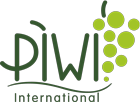Vol.:(0123456789)1 3Theoretical and Applied Genetics
https://doi.org/10.1007/s00122-022-04077-0
REVIEW
A cool climate perspective on grapevine breeding: climate change and sustainability are driving forces for changing varieties in a traditional market
Reinhard Töpfer1 · Oliver Trapp 1
Received: 27 October 2021 / Accepted: 7 March 2022
© The Author(s) 2022
Abstract
A multitude of diverse breeding goals need to be combined in a new cultivar, which always forces to compromise. The biggest
challenge grapevine breeders face is the extraordinarily complex trait of wine quality, which is the all-pervasive and most
debated characteristic. Since the 1920s, Germany runs continuous grapevine breeding programmes. This continuity was
the key to success and lead to various new cultivars on the market, so called PIWIs. Initially, introduced pests and diseases
such as phylloxera, powdery and downy mildew were the driving forces for breeding. However, preconceptions about the
wine quality of new resistant selections impeded the market introduction. These preconceptions are still echoing today and
may be the reason in large parts of the viticultural community for: (1) ignoring substantial breeding progress, and (2) stick-
ing to successful markets of well-known varietal wines or blends (e.g. Chardonnay, Cabernet Sauvignon, Riesling). New is
the need to improve viticulture ́s sustainability and to adapt to changing environmental conditions. Climate change with its
extreme weather will impose the need for a change in cultivars in many wine growing regions. Therefore, a paradigm shift
is knocking on the door: new varieties (PIWIs) versus traditional varieties for climate adapted and sustainable viticulture.
However, it will be slow process and viticulture is politically well advised to pave the way to variety innovation. In contrast
to the widely available PIWIs, competitive cultivars created by means of new breeding technologies (NBT, e.g. through
CRISPR/Cas) are still decades from introduction to the market.
…. read more
Table 1 A collection of 42 resistant cultivars available in Germany and France including the presence of different resistance loci against downy mildew (Rpv) and powdery mildew (Run and Ren) (colour table online) Side 3

